Lesson 1: The woman transformed into a loom
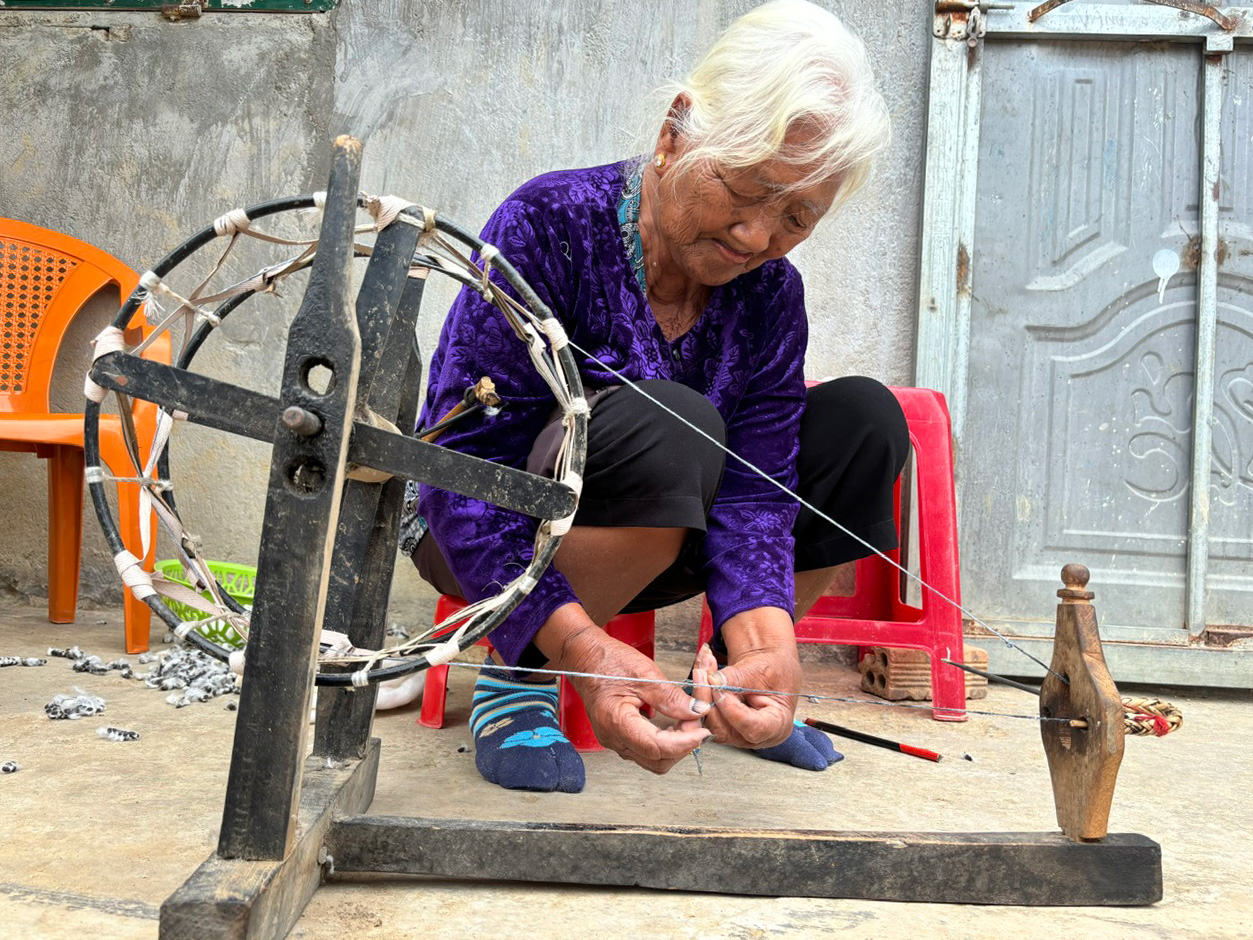 |
| Thin's mother - artisan Long Dinh Ka Nier, over 80 years old, is still busy spinning yarn. |
• 70 YEARS OF WORKING DILIGENTLY ON THE LOOVE FRAME
Mother Thin, as the K'Ho people often call older women by their eldest daughter's name, is over 80 years old. She no longer remembers when she learned to weave, perhaps since childhood, when she was a little girl named Long Dinh Ka Niêr, only 5 or 7 years old, following her mother and grandmother into the forest, picking each leaf of the t'ram ca d'ru (small-leaf t'rum) or t'ram r'do (large-leaf t'ram), pounding them to dye cotton threads to create the indigo color of the mountains and forests. The t'ram tree is the tree used to dye threads of the K'Ho Dam Pao people, close to the Dam Pao people like flesh and blood.
Now, at the age of over 80, Mrs. Ka Niêr is still diligently weaving indigo fabrics in the traditional weaving style of K'Ho women. She said that K'Ho women use themselves as looms. They step on the loom, stretch their backs to keep the thread flat, and thread the thread with their hands. Without looking, Mrs. Ka Niêr still produces brocade fabrics with the colors of the mountains, with patterns reminiscent of the peaks of her homeland. "I'm old, sitting and weaving is tiring, my back hurts. But I miss the loom, I teach my children and grandchildren, and I earn a little extra money, so I still spin cotton, spin thread, dye and weave every day," the white-haired K'Ho woman still diligently spins thread while reminding her daughter and granddaughter of the weaving techniques passed down from her and her mother.
Mrs. Ka Niêr’s family has many generations of traditional brocade weaving. Her daughters, Mrs. Long Đinh Ka Thin, are nearly 70 years old, and Mrs. Ka Ba, over 60, still weave every day. Her granddaughter, Ms. Long Đinh Ka Ly, 45 years old, is also still attached to the weaving profession. The entire Long Đinh family, the daughters and granddaughters, all know the brocade weaving profession passed down by their ancestors. These women have immersed their lives in the threads bearing the color of the mountains, the threads passed down from their mothers, their grandmothers, and the ancient traditions of the K’Ho Đam Pao people.
Not only Mrs. Ka Niêr's family, but also the family of Nương's mother, Mrs. Đôn Gun Ka Trăng, Mrs. Ka Tín's family, a woman famous for her talent in weaving, who taught many Đàm Pao girls the traditional patterns of the village... Women through many generations are still working hard and diligently every day to maintain the Đàm Pao weaving profession.
• “THREAD MEETS NO STRANGERS”
The brocade weaving profession of Dam Pao women is imbued with the unique culture of the mountainous region. Mrs. Long Dinh K'Thin, who has been involved in the weaving profession for nearly 60 years, recounts in great detail the brocade weaving profession of her village. She said that in the past, Dam Pao women wove brocade from beginning to end. When the season came, she followed her mother to sow cotton seeds, then in the dry season, when the cotton was ripe, she collected each cluster of cotton, dried it thoroughly, beat the cotton fibers, then wound them into spools, and used a spinning wheel to spin them to get spools of thread. The thread was dyed with old T'râm leaves, crushed, soaked with squash seeds and chili peppers to get the "original" indigo color, the true indigo color passed down from their ancestors. She said that Dam Pao people abstained from letting strangers into the dyeing area when dyeing thread, "the thread should not meet strangers", otherwise the dyeing batch would be ruined, and the thread would not have the right color.
“In the past, men in the village only participated in going to the forest to pick t'ram leaves for women to dye the fabric. The rest was women's work, men did not participate. But now, families who still maintain the brocade weaving profession have brought t'ram ca d'root and t'ram r'do trees to plant right in their gardens. Only old leaves of the t'ram tree are picked for dyeing, and young shoots are left for the tree to grow,” Ms. Ka Thin recalled. Like her family, artisan Ka Niêr still maintains the tradition of growing cotton to harvest cotton, and spinning thread to weave fabric. Cotton trees are planted at the end of the rainy season, and by February, the beginning of the dry season, the cotton fruit is dry and curled, producing clusters of pure white cotton, which is the season when the K'Ho people harvest cotton to spin thread.
In the K'Ho Dam Pao family, weaving has become a tradition, passed down from mother to child, from grandmother to grandchild. The mountain and water patterns are woven quickly by the skillful hands of women, like flesh and blood embedded in their hands and backs since birth, when they were still lying on their mothers' backs. Dam Pao brocade is loved by residents of surrounding areas, from Da Huynh, Bo Lieng, Kon Tach Dang, R'Lơm, Da Nung... and used to sew belts and shirts for young men and women, for the elderly and children. The colors from the hands of Dam Pao women are brilliant every day, contributing to preserving and promoting the traditions of the K'Ho people of Lam Ha land, as beautiful as a picture with the colors of the highland mountains and forests.
(TO BE CONTINUED)
Source: https://baolamdong.vn/kinh-te/202504/nhung-soi-chi-det-sac-mau-dam-pao-08d417a/


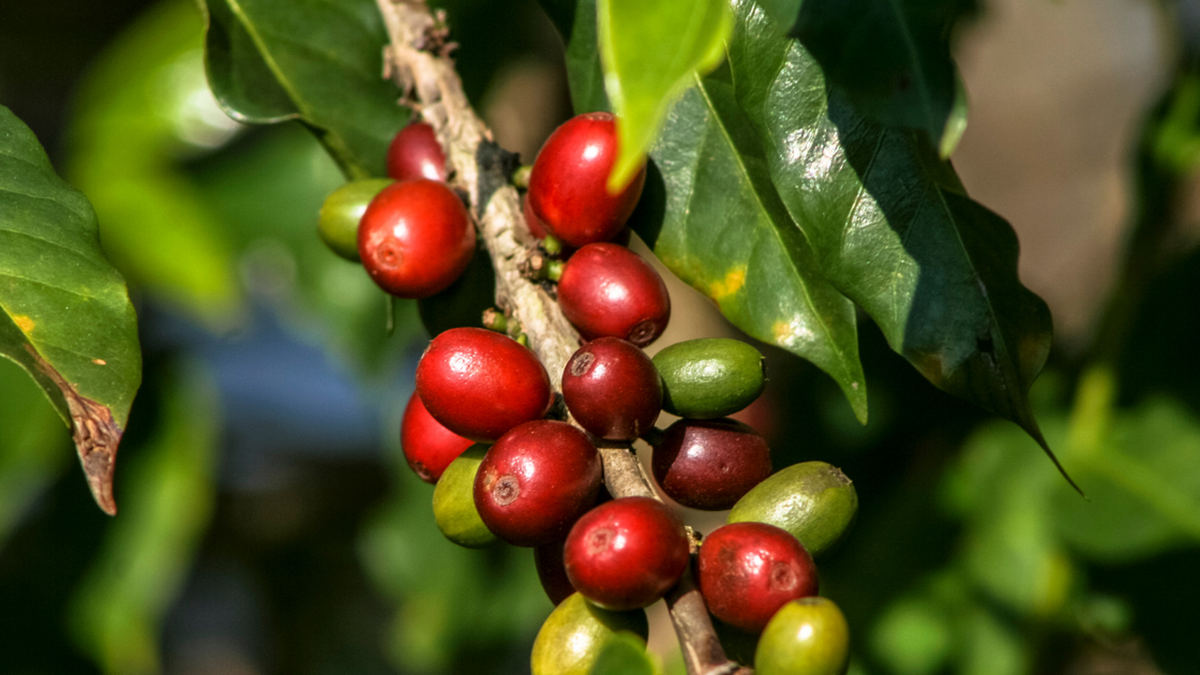

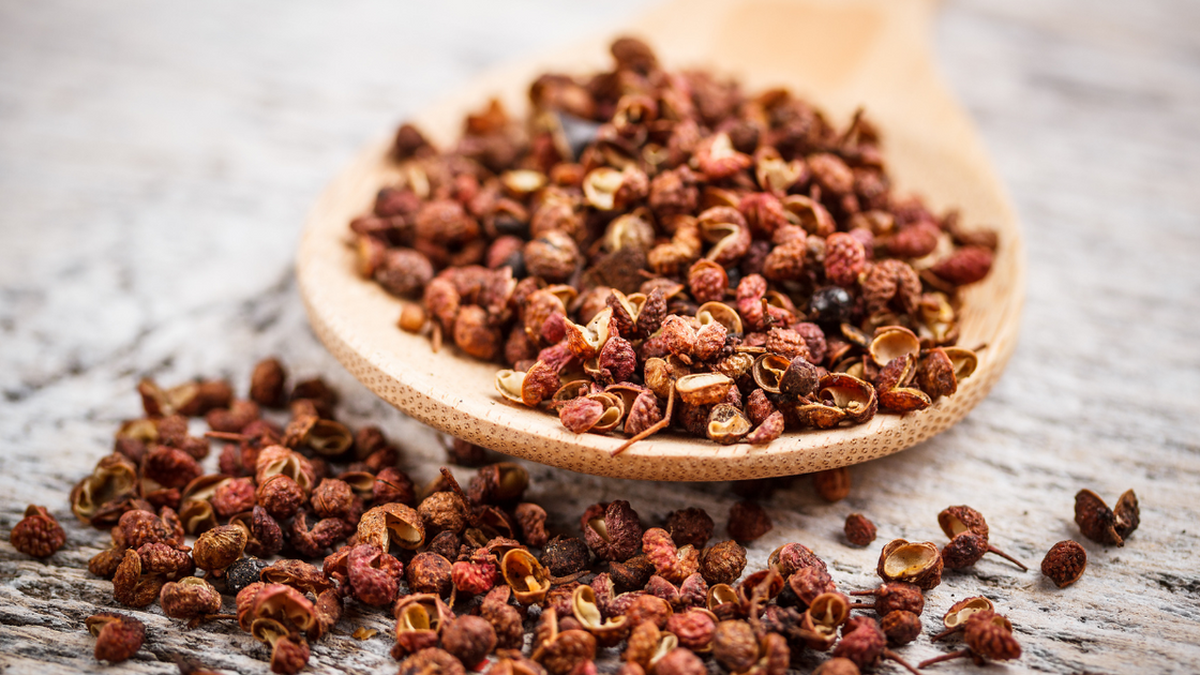

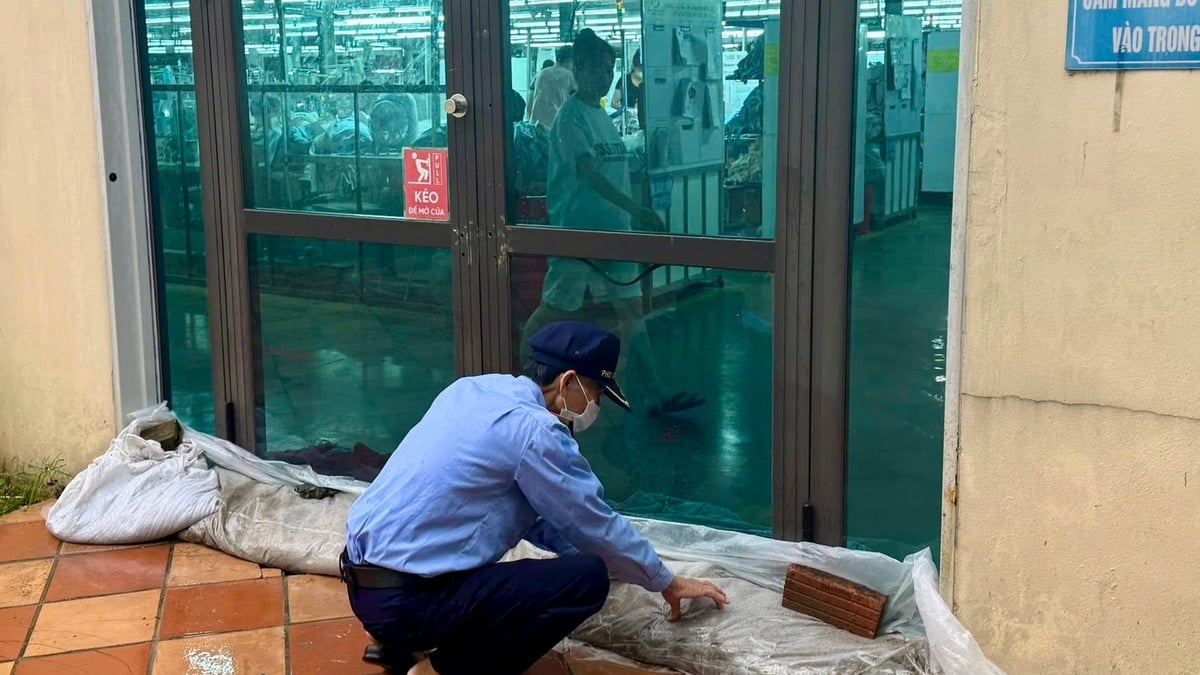
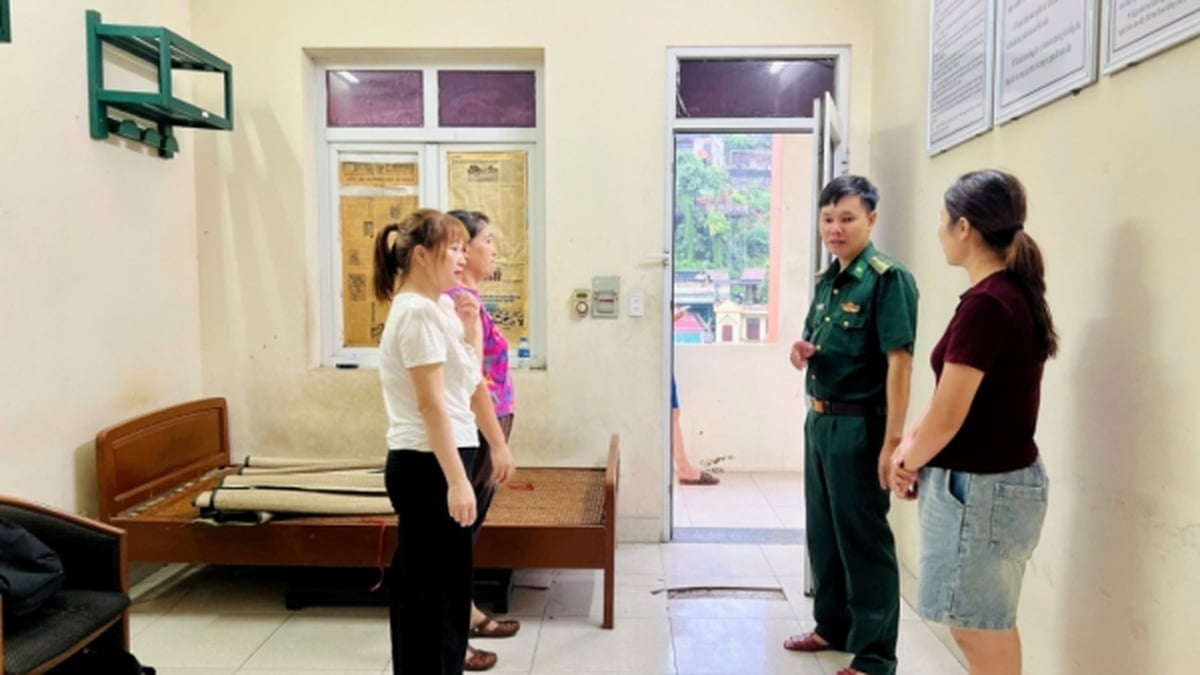
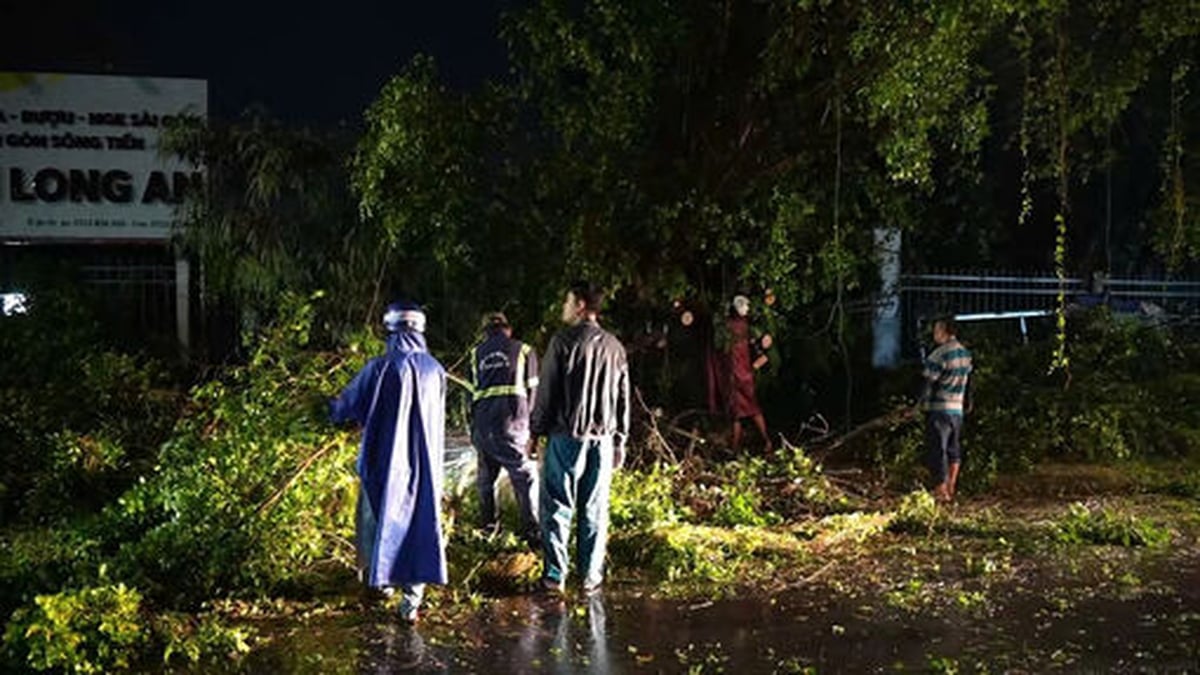
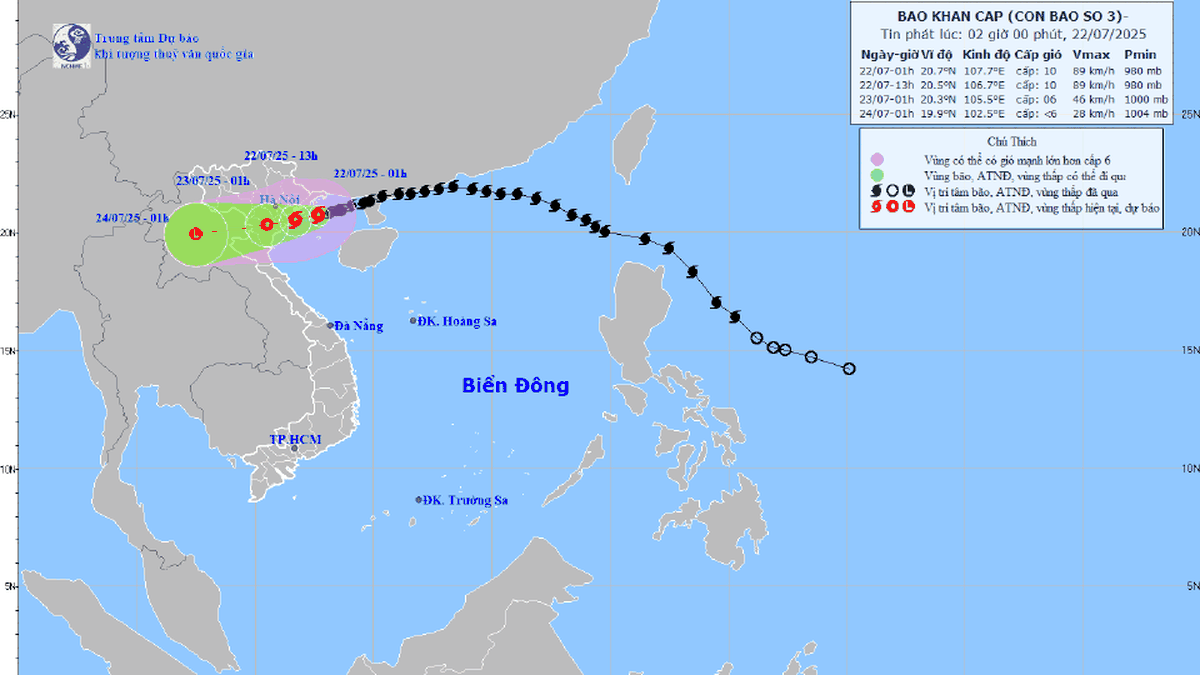
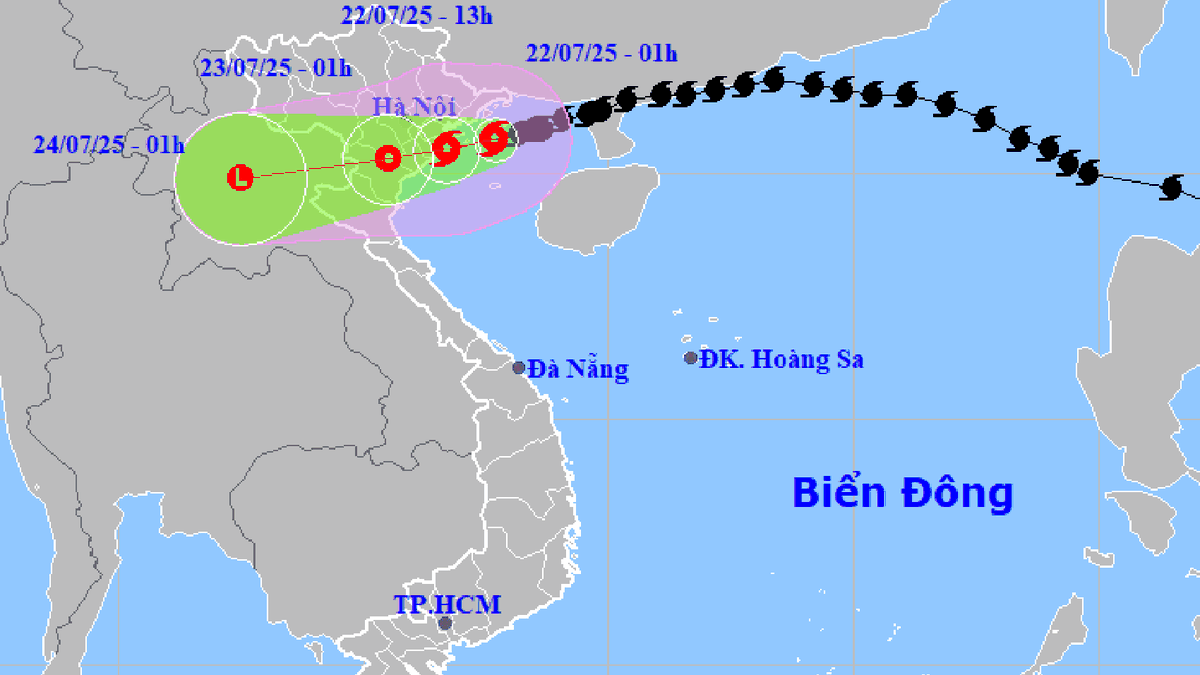











![[Photo] National Assembly Chairman Tran Thanh Man visits Vietnamese Heroic Mother Ta Thi Tran](https://vphoto.vietnam.vn/thumb/1200x675/vietnam/resource/IMAGE/2025/7/20/765c0bd057dd44ad83ab89fe0255b783)









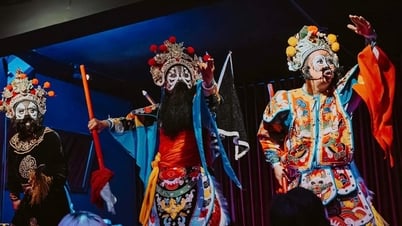

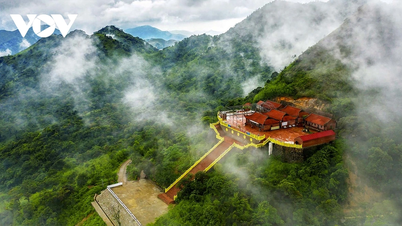



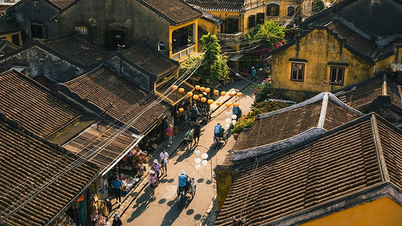







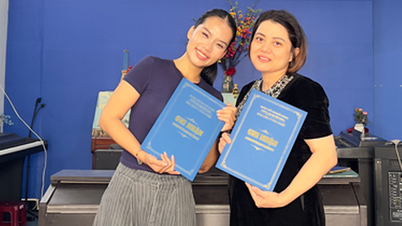
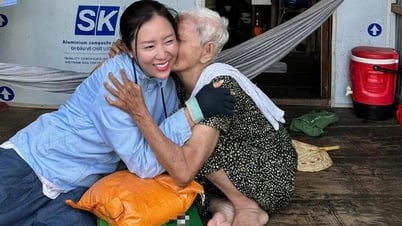
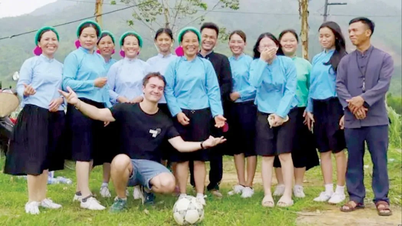



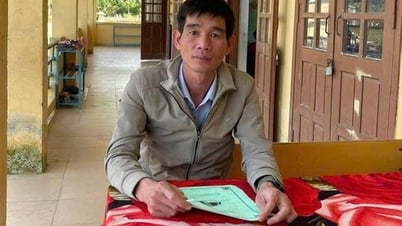




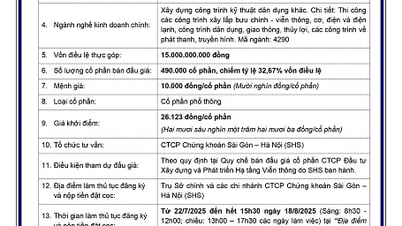



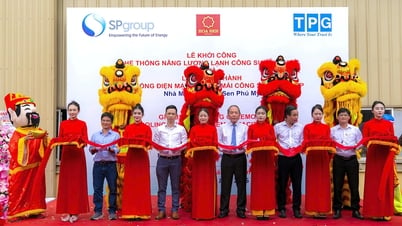


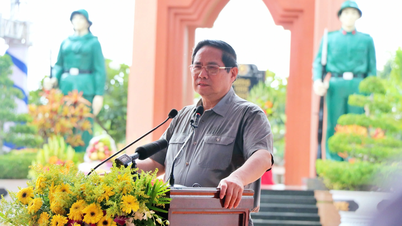
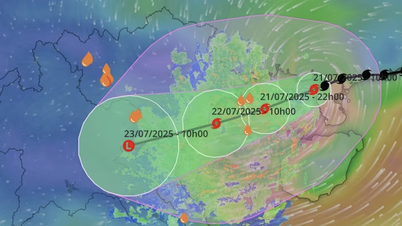





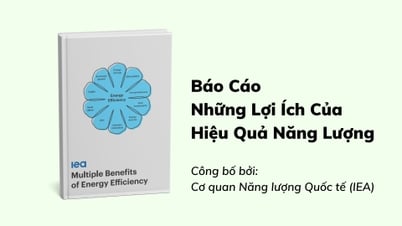

























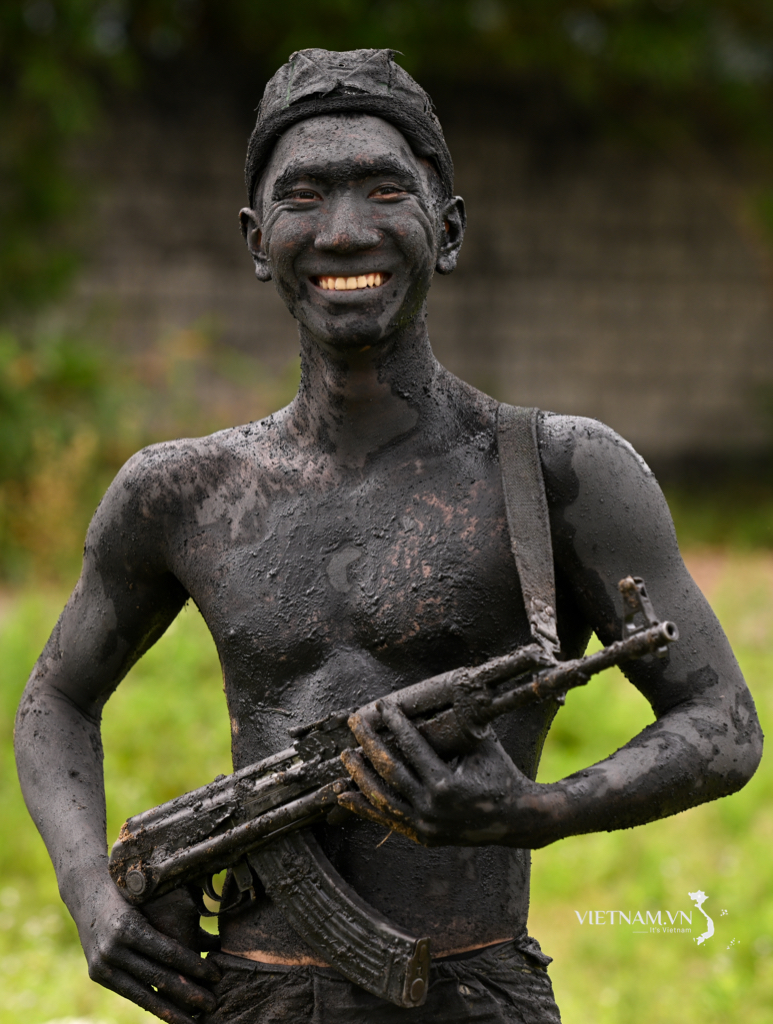
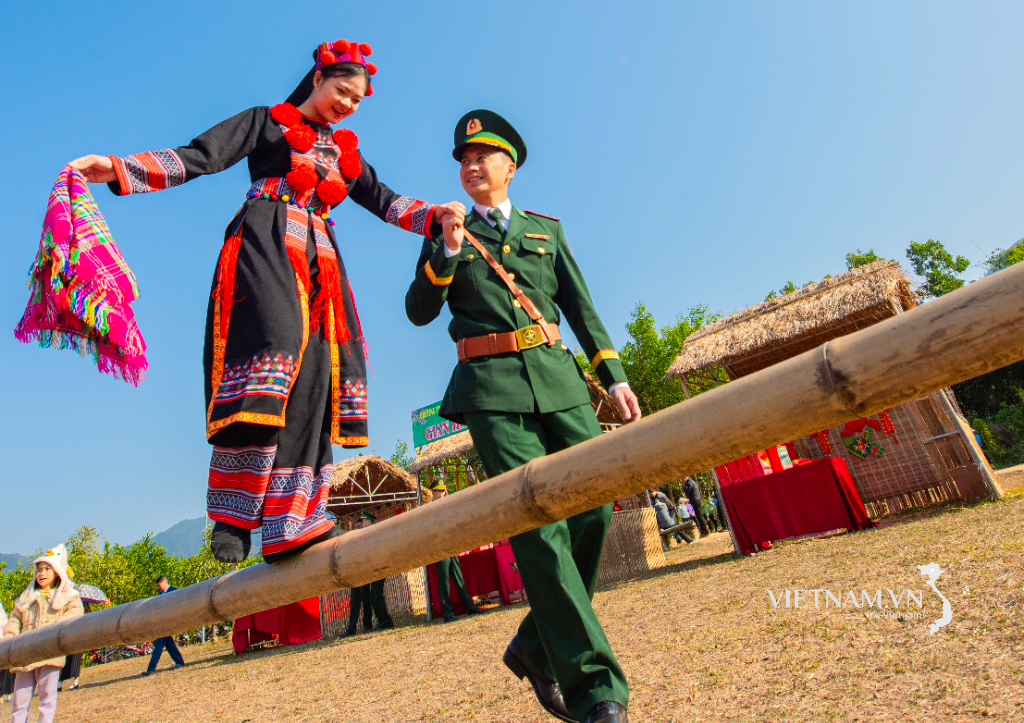
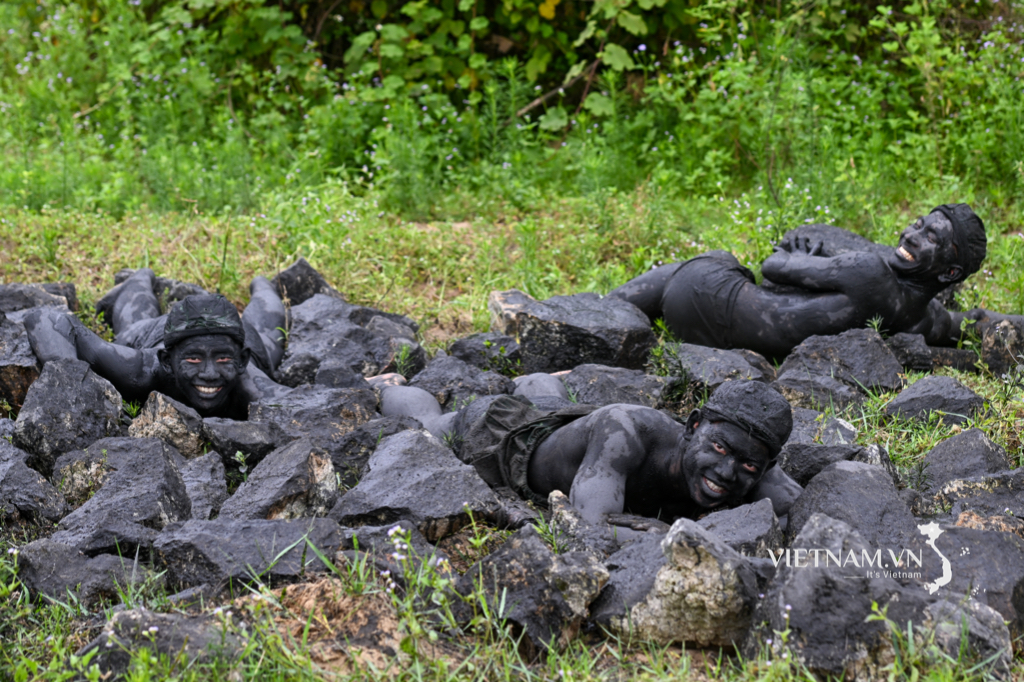
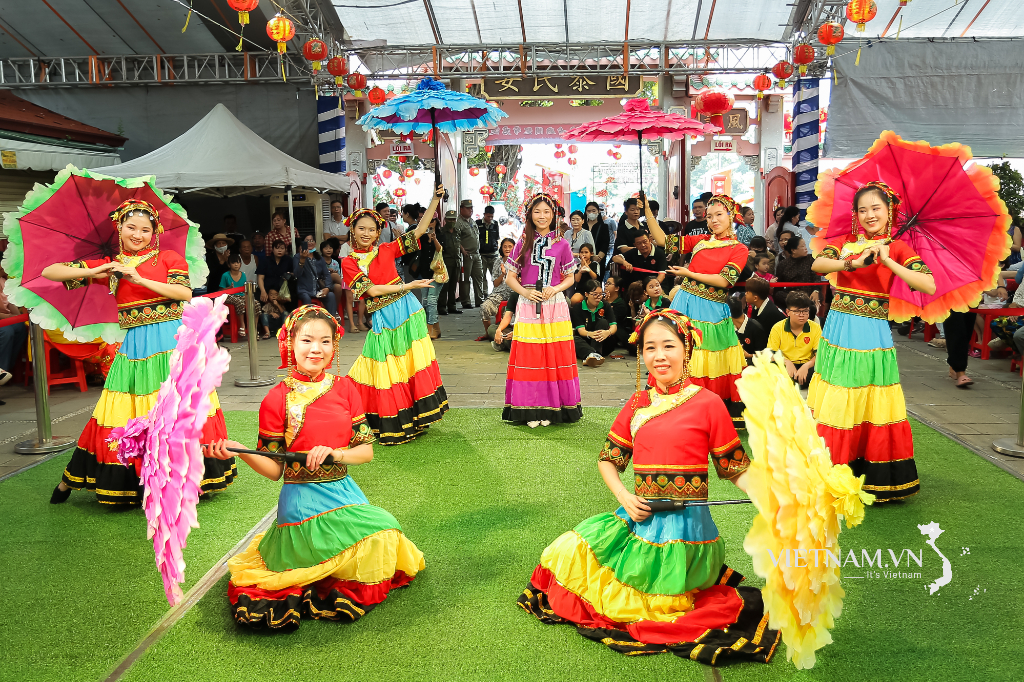
Comment (0)